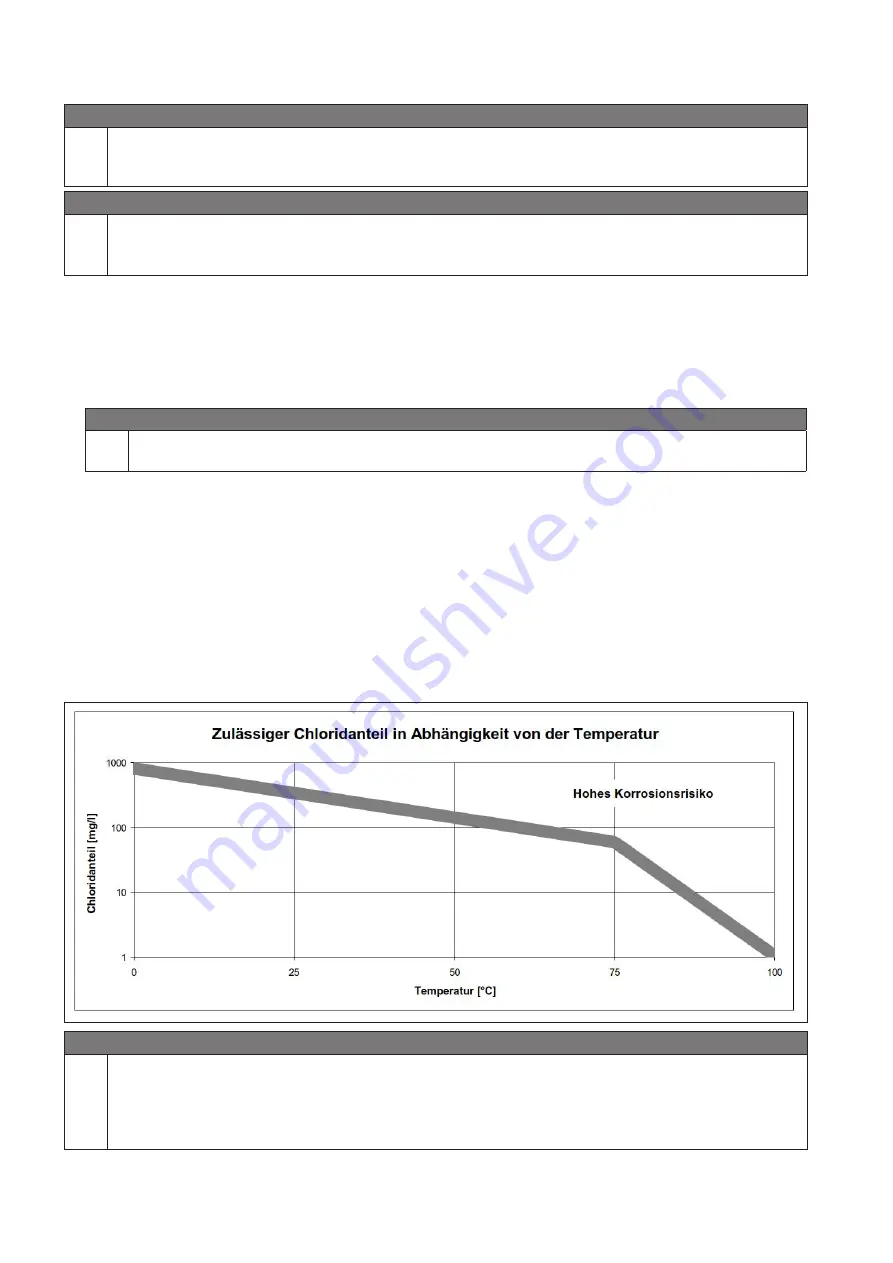
Further advice regarding corrosion protection
NOTICE
High fluid temperatures (> 60 °C) increase the risk of corrosion
f
Do not set the hot water temperature or the heating water flow temperature too high.
NOTICE
Long periods of stagnation increase the risk of corrosion
f
Flush the system on a regular basis – either manually or automatically – if regular long periods of stagna-
tion are to be expected (VDI/DVGW 6023).
• As a fundamental rule, you should take particular care when combining hydrogen carbonate and chloride.
Low
hydrogen carbonate content combined with high a chloride content increases the risk of corrosion.
• Take particular care when combining hydrogen carbonate and sulphate
. If using copper-brazed heat exchang-
ers, the hydrogen carbonate content in the water must not be less than the sulphate content.
If this does
occur, then a nickel, stainless steel heat exchanger or one with protective layer must be used instead.
• If the thresholds for substances in water are not observed, a
water treatment system
may need to be installed.
NOTICE
If a water treatment system is operated incorrectly, it can increase the risk of corrosion!
•
For mixed installations, the so-called “flow rule” must be observed when using copper-brazed heat
exchangers in conjunction with galvanised steel pipes.
Further information in this regard is provided in
DIN EN 12502.
•
Flush
all of the station’s pipework
before
installation
(DIN EN 806-4) to remove any dirt particles and residues
from the system.
• When performing
maintenance
on the station, remember that
detergents can lead to corrosion of the heat ex-
changer
. Observe the provisions set down by the German Technical and Scientific Association for Gas and Water
(DVGW) in this regard, e.g. Worksheets W291 and W319.
• When using a copper-brazed heat exchanger without a protective layer, the electrical conductivity of the
water varies between 50 and 500 µS/cm
. Bear this in mind in particular in the context of water treatment pursu-
ant to VDI 2035.
NOTICE
Corrosion and scale formation in the system
f
It is the responsibility of the plant engineer and the user of the system to take into account substances in
water and factors that could influence corrosion and scale formation and to evaluate their impact on their
respective situation. It is therefore crucial to consult the local water supply company in advance in areas
where water supply is critical.









































